
This story was featured in the January/February 2023 issue of ESSENCE, on stands now.
In early 2021, Aishah White, SVP of Media and Strategic Development at Warner Records, took a vacation to Puerto Viejo de Talamanca, Costa Rica. She was searching for peace for her mind, body and soul. She believed that the stress brought on by her hectic work schedule in Los Angeles, the policies of Donald Trump and the various racial tensions they created were factors that could have contributed to her suffering a life-threatening brain hemorrhage in 2020.
The killing of George Floyd made things harder. In its wake, White and many other music-industry heavyweights drove efforts to ensure equality and equity for Black artists in music. For White, devising initiatives while processing the trauma of the killing was an extremely heavy task, especially when paired with the effort to help her preteen daughter understand what was happening in the world. Still, White kept pushing. “I was trying to be everything for everyone,” she remembers. “I wasn’t taking the time to see what I needed and to give myself grace, love and care.”
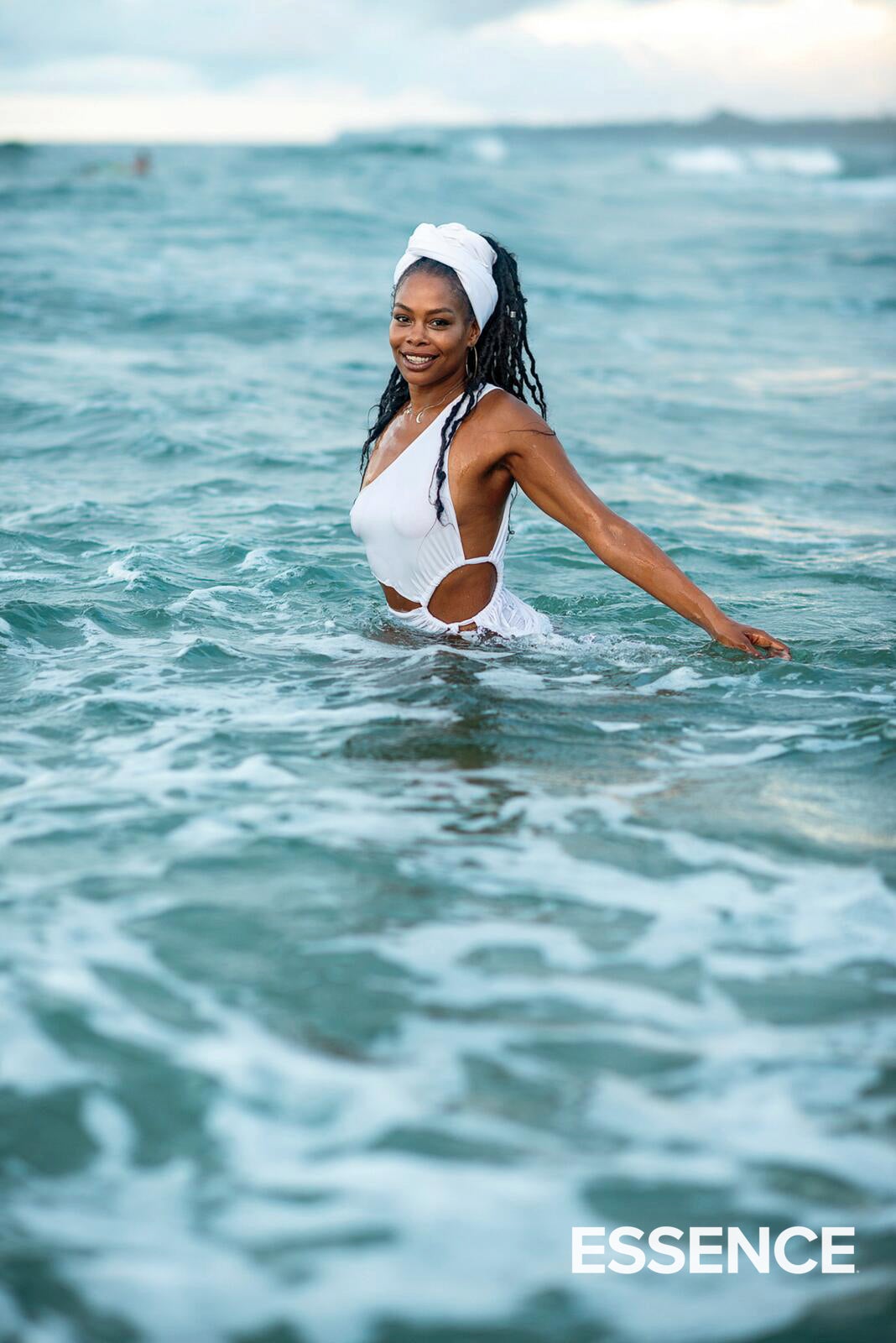
While on a retreat in Sedona, Arizona, in December 2019, White came down with an awful migraine after a hike. Since migraines were rare for her, she figured the altitude had caused the pain. A few hours after taking Aleve, she felt fine. But the next day, the migraine kicked up again—and the pain was ten times worse. “It was to the point where it was blinding me,” recalls White. “I couldn’t see. My whole body was shaking, and I was sweating. My head felt like it was going to explode.”
The pain lasted for hours. “I was screaming,” she recalls. “I had stripped out of my clothes, and I was like, God if you’re going to take me, take me now, because I can’t take it.” Away at a remote location, White didn’t have access to immediate medical attention. But with the help of her cousins, who put wet towels over her eyes to try to calm her symptoms, she felt the throbbing pain in her head start to ease up a few hours later.
Upon returning home to L.A., White underwent craniosacral therapy to help relieve compression of the bones in the head. The bodywork offered some relief. But not long after the CST session, her pain started to flare up again, and she went to the E.R. “They did an MRI—and kept me there because they saw a bleed,” she says. A week later, she was told she was lucky to be alive after suffering from a rare condition called reversible cerebral vasoconstriction syndrome, caused by the sudden constriction of the vessels that supply the brain with blood.
She was connected to specialists at UCLA, who suggested she take blood thinners. But she was told there was no way to ensure this type of bleeding wouldn’t happen again and that there is no known cause of RCVS. “For me, that wasn’t enough,” says the 41-year-old. “The only thing I thought of when I was in that hospital bed was my daughter and not being able to be there for her. I want to see her get married, have kids, get old. So, I started to do a deep dive into self-healing and neuro research.”
White became moved by the “Heal your body with your mind” ideology of Joe Dispenza, who has a doctor of chiropractic degree. “He talked about environmental risk, and factors that play into this, and being able to get in a place of meditation that is healing and renewing to your body and brain,” she says. Launching into a self-care plan, she put more focus on her meditation practice. Then something came to her.
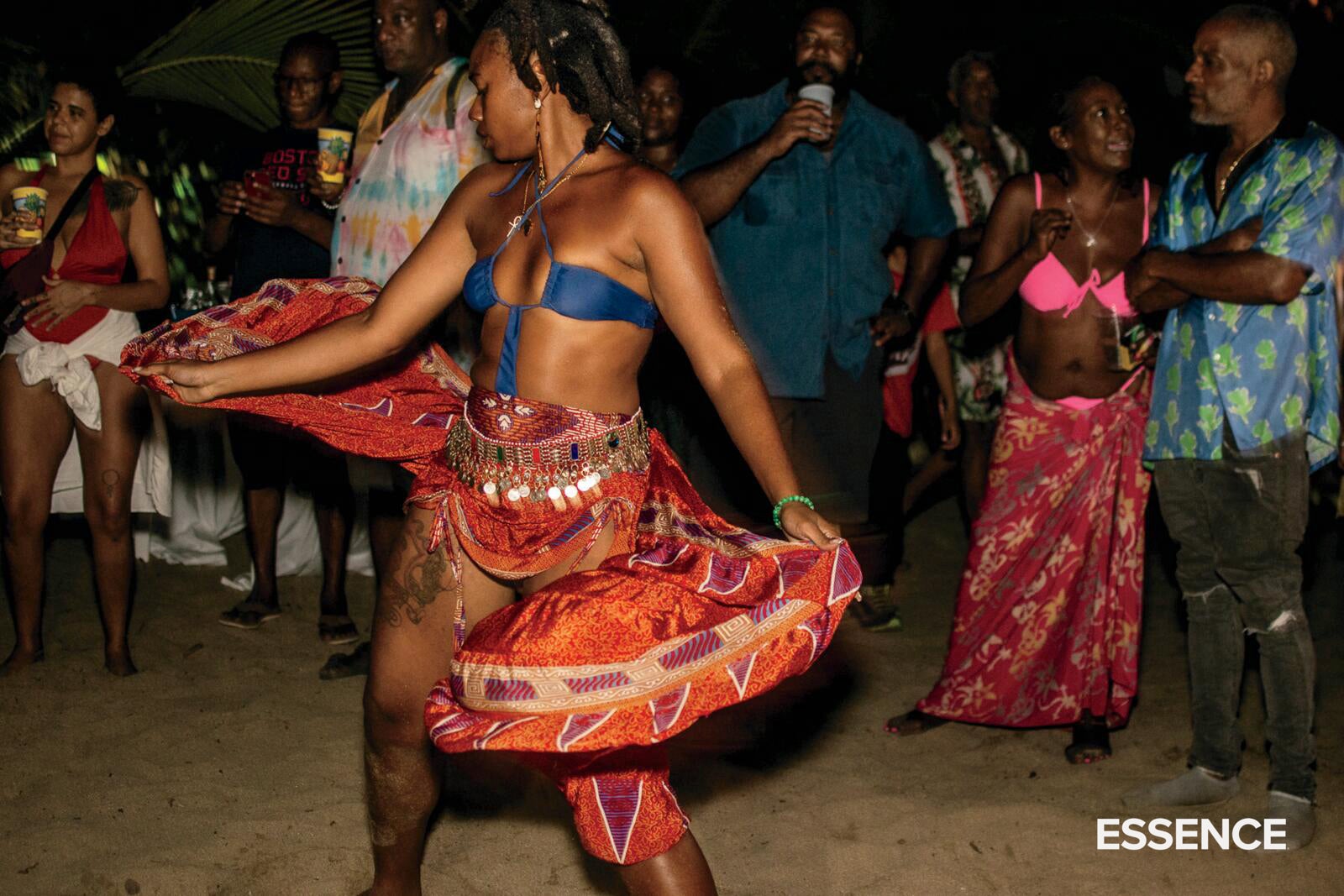
She remembered a three-week-long trip to Costa Rica with her daughter the previous year. She recalled how free she had felt there, how she’d been warmly embraced by the people, and how she was pulled in by the harmonious beach and jungle, feeling an intense connection to nature. “My spirit was like, You need to go back to where you were and how you felt there,” she says. “That’s what you need to feel right now.”
White returned to Costa Rica in January 2021 and stayed for six weeks. “Going back took away outside distractions, and I was able to hone in on what I needed to do for myself—which was pursuing a combination of physical, mental and emotional wellness.” An initial step was reevaluating her diet. She visited Juice For Life, a Puerto Viejo smoothie and juice bar, where she was guided through a cleanse by herbalist Joseph Hodgson, whose motto is “Let food be your medicine.” Hodgson custom-made juices for White, using local goods like spinach, bitterroot, sarsaparilla and sea moss. “He cleaned my blood and body with his food and positive energy,” says White, who adds that his spirit was emblematic of the wider Puerto Viejo community. “The people from there treat you like family,” she says. “They’re so warm, giving and loving. My family’s from Jamaica, and the Caribbean culture is very prevalent there. It felt familiar. They took me in.”
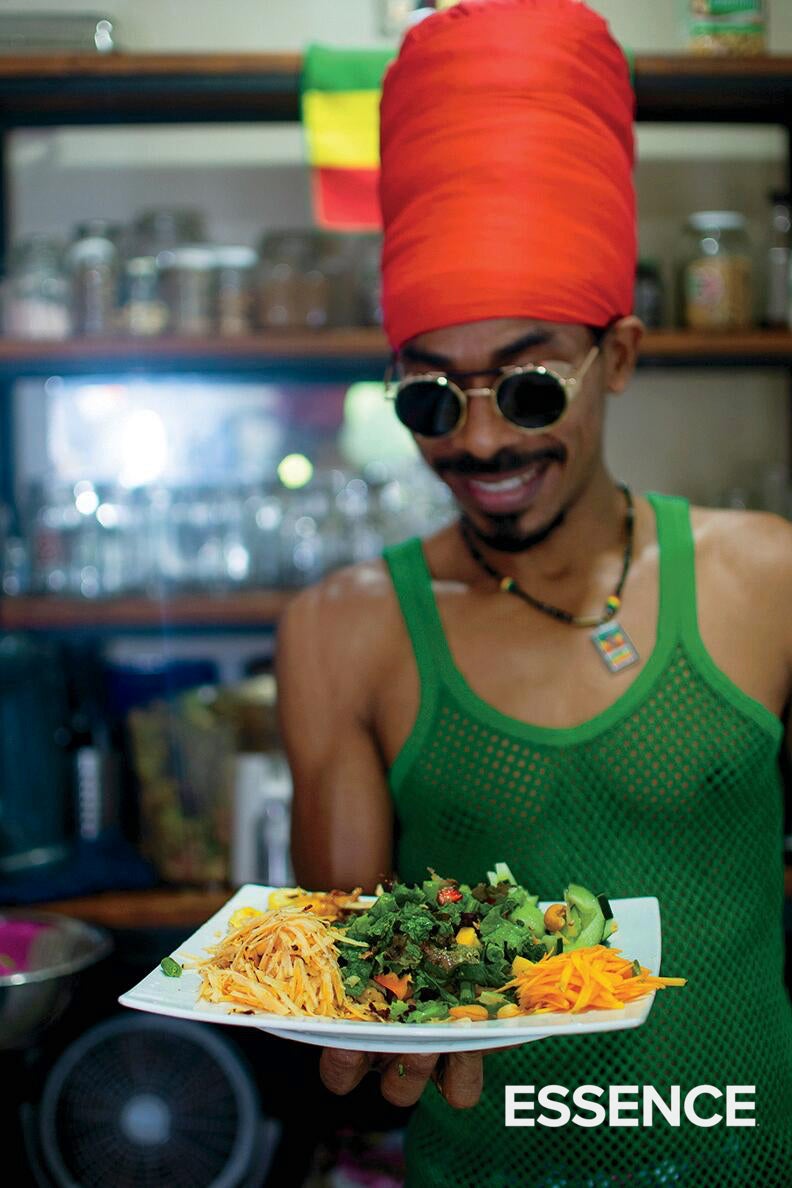
While in Costa Rica, White conquered her fear of the ocean, learning to swim—and surf!—with the help of local professional surfer and Surf the Jungle owner Misael Brown. “The water and waves—there’s such a connection with nature and a healing energy,” she says. “That was something I was missing in my life.” She also tackled another fear: getting close to snakes. “I literally almost sat on one,” she recalls, “and had to just face it right then. But I had a spiritual moment where I felt a connection to this being, and it changed my perspective and released my fear.”
Remote-working near the beach or in coworking spaces in Costa Rica allowed her to be incredibly productive. The soundtrack of the land’s wildlife and views of its plush greenery were a far cry from the urban landscape outside her office in downtown L.A. “In my office, I’m looking out the window at industrial buildings, graffiti, dirt and trash everywhere,” she says. In Puerto Viejo, “I was able to work with greater peace of mind.”
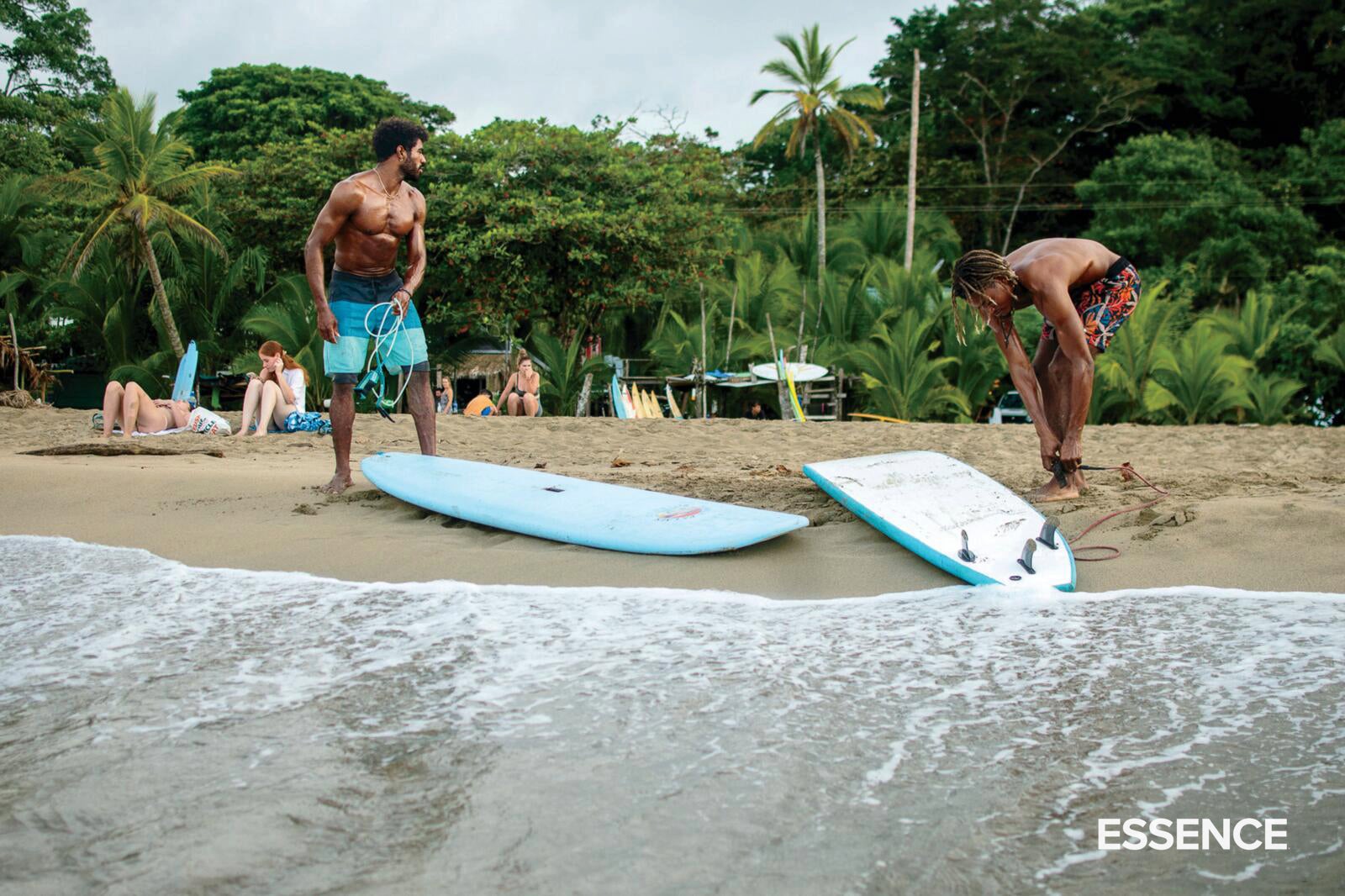
For White, finding a deeper level of healing also required that she put distance between herself and the U.S.—where the energy for Black folks is often “so heavy, murky and dark,” she says. “When you remove yourself from all that, and you go somewhere where there is light, natural beauty and tranquility, you can’t help but see there is a better quality of life.”
White isn’t the only Black American woman who has traveled to Costa Rica for serenity. Real estate developer Simone White (no relation) planned to visit for three weeks in 2020—and never left. She now calls Costa Rica home. “It’s a culturally rich, diverse community, and everybody is committed to being happy,” says Simone, who renovated a luxury property in Punta Uva to host others looking for a respite. “It’s a grounding place where you can feel God all the time, regardless of your beliefs.”
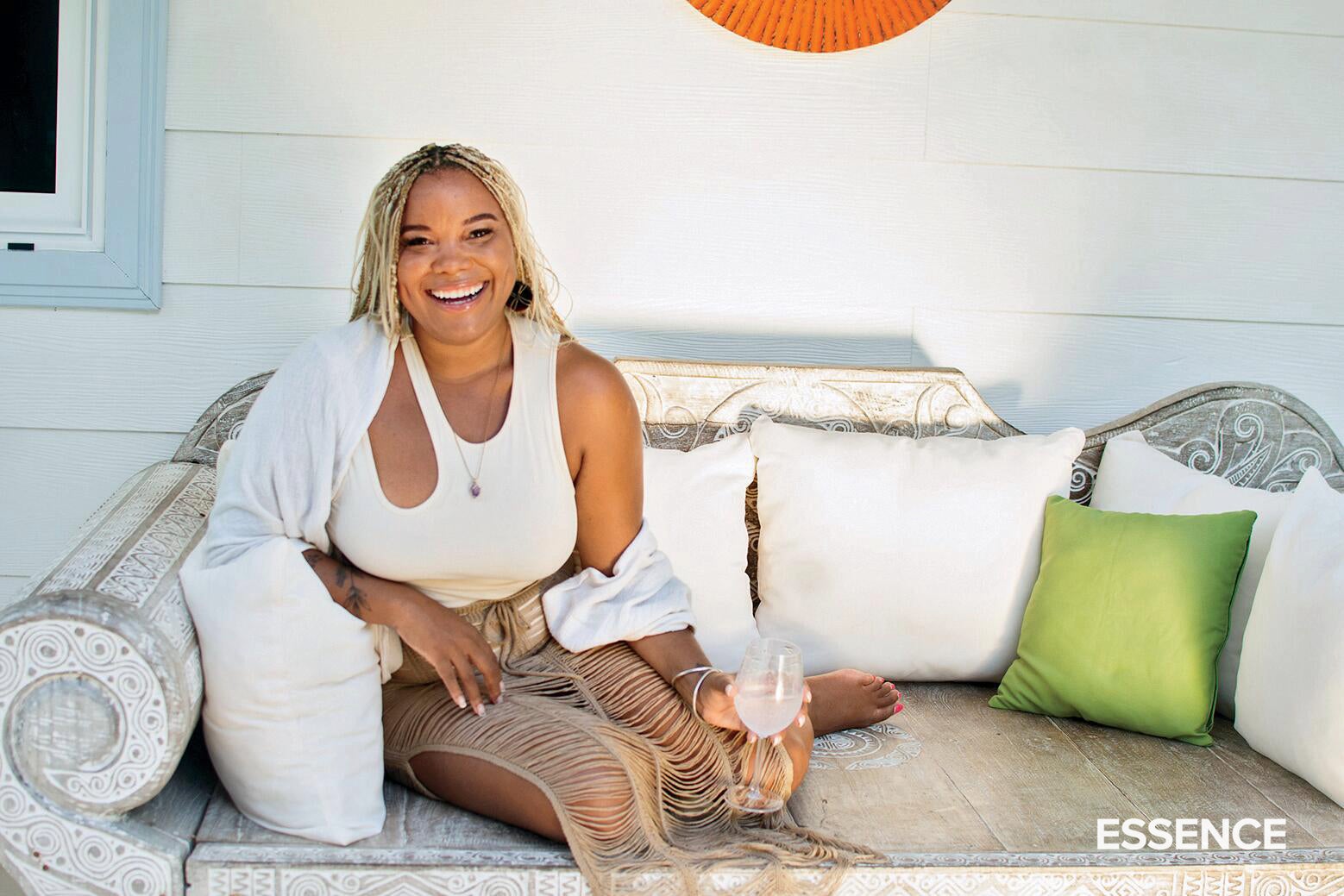
In 2014, Davia Shannon moved to Costa Rica from L.A., after being constantly passed over for promotions while working in finance. After moving to Puerto Viejo, Shannon says, she felt “safe, protected, loved, cherished and appreciated—I’d never felt that before.” The owner of Life-A-Holic Costa Rica, a company dedicated to helping Black expats relocate to Costa Rica, Shannon says that because of her move, she can provide her kids with generational wealth. “In Costa Rica, I was able to accumulate four properties in just seven years,” she says.
Now a picture of vitality, Aishah White returns to Costa Rica at least four times a year; she is developing a luxury rental property and recording studio there. “I did go back to all of those specialists to do tests again,” she says of follow-ups with doctors to check on her condition. “They said I’m in amazing health. I’ve been living my best life.”
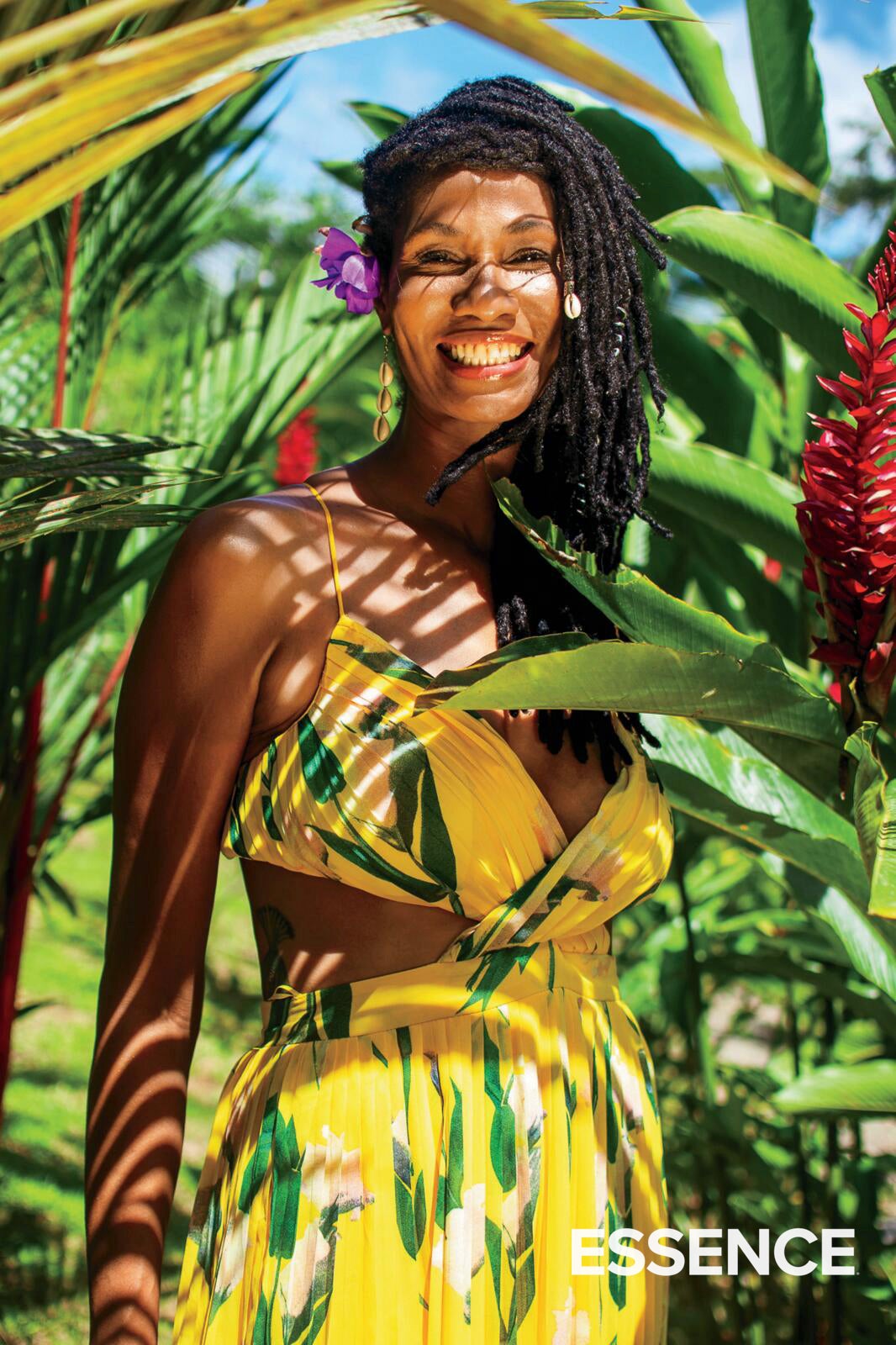
Her healing journey has given her a whole new lease on life, she adds. “I’m much more hopeful,” she says. “I eat better, and I’ve taken up surfing! Before this point in my life, I had been thinking, This is the start of the decline. But you can do whatever you want, no matter your age. I’m still peaking. I’m still on my way up. That feels amazing.”
Photography by Ocean Morisset
